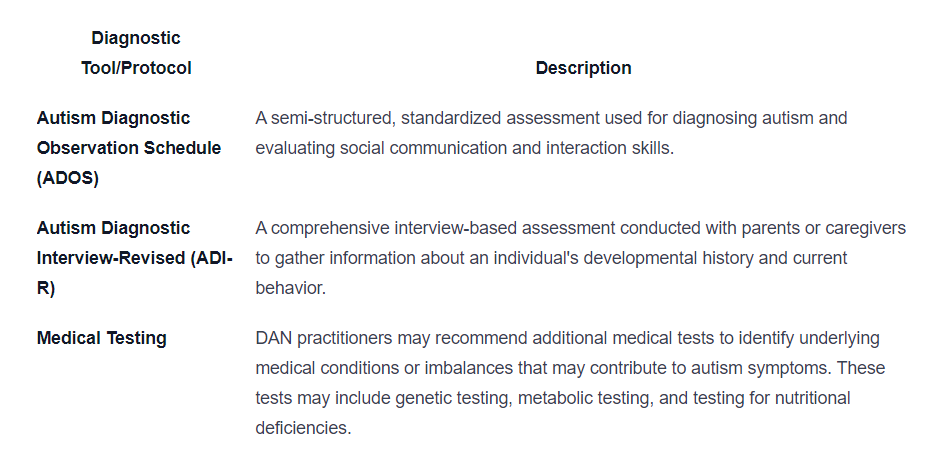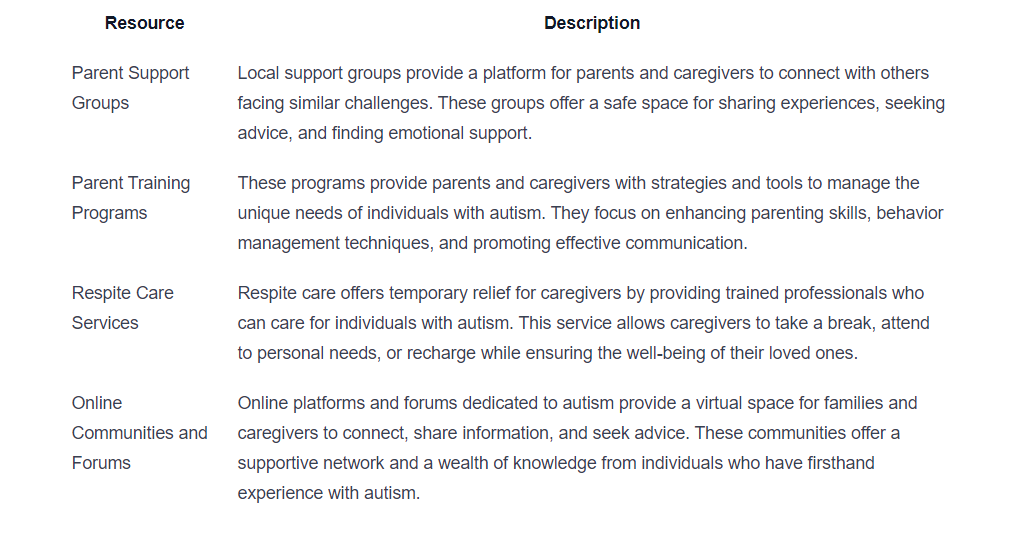What is Defeat Autism Now?
Uncover the power of Defeat Autism Now! Explore its history, treatment approaches, controversies, and future directions.

Understanding Defeat Autism Now
To comprehend the significance of Defeat Autism Now, it is essential to gain an overview of this approach and understand its history and evolution.

Overview of Defeat Autism Now
Defeat Autism Now (DAN) was a movement that aimed to provide innovative and alternative treatments for individuals with autism spectrum disorder (ASD). Founded in 1995 by Bernard Rimland, Ph.D., and Sidney Baker, M.D., DAN sought to address the underlying causes of autism and develop effective interventions.
The focus of Defeat Autism Now was to explore various biomedical treatments that could potentially improve the symptoms and overall well-being of individuals with autism. These treatments went beyond traditional behavioral therapies and included interventions related to diet, nutrition, supplementation, and the reduction of environmental toxins.
History and Evolution
Defeat Autism Now began as a small group of researchers and clinicians who were dissatisfied with the limited treatment options available for autism. Over time, the movement gained momentum and attracted a broader community of parents, caregivers, and healthcare professionals who were seeking alternative approaches to support individuals with autism.
The approach advocated by Defeat Autism Now evolved as research and understanding in the field of autism progressed. It incorporated a wide range of interventions, including specialized diets, nutritional supplements, detoxification protocols, and targeted therapies aimed at addressing underlying medical conditions often associated with autism.
While Defeat Autism Now was influential in raising awareness about the potential impact of biomedical treatments on autism, its practices and protocols have also been subject to criticism and controversy. As the field of autism research continues to advance, new paradigms and treatment approaches have emerged, leading to a shift away from the specific methodologies associated with Defeat Autism Now.
Understanding the historical context and evolution of Defeat Autism Now provides insight into the origins of this movement and its contributions to the field of autism treatment. As we explore the treatment approaches and key figures associated with Defeat Autism Now, it is important to consider the broader landscape of autism research and the transition to new paradigms in the field.
Approach and Methodology
When it comes to understanding Defeat Autism Now (DAN), it is important to delve into the approach and methodology employed by this movement. This section will explore the treatment approaches used by DAN as well as the diagnostic tools and protocols utilized.
Treatment Approaches
Defeat Autism Now encompasses a range of treatment approaches aimed at addressing the core symptoms of autism and improving the overall well-being of individuals with autism spectrum disorder (ASD). These treatment approaches are often tailored to meet the unique needs of each individual and may include a combination of therapies. Common treatment approaches employed by DAN include:
- Biomedical Interventions: Biomedical interventions focus on addressing underlying physiological imbalances that may contribute to the symptoms of autism. This can involve dietary changes, supplementation, and other interventions aimed at supporting overall health and reducing specific symptoms.
- Nutritional Interventions: Nutritional interventions play a significant role in the DAN approach. These interventions may include specialized diets or the elimination of certain food groups that are believed to exacerbate symptoms or contribute to gut-related issues often associated with autism.
- Environmental Interventions: DAN recognizes the impact of environmental factors on autism. This approach involves minimizing exposure to toxins and promoting a healthy and supportive environment for individuals with autism.
- Behavioral Therapies: In addition to biomedical interventions, behavioral therapies are an integral part of the treatment approach. These therapies focus on improving communication, social skills, and behavior management in individuals with autism. Applied Behavior Analysis (ABA) is one of the commonly used behavioral therapies within the DAN framework.
Diagnostic Tools and Protocols
In order to develop personalized treatment plans, accurate diagnosis is crucial. DAN utilizes various diagnostic tools and protocols to assess individuals with autism. These assessments may include:

The utilization of these diagnostic tools and protocols allows DAN practitioners to gain a deeper understanding of each individual's strengths, challenges, and specific needs. This information then guides the development of personalized treatment plans to support individuals with autism on their unique journeys.
By employing a comprehensive approach that combines biomedical interventions, nutritional interventions, environmental considerations, and behavioral therapies, DAN aims to provide individuals with autism the best possible support to enhance their overall well-being and quality of life.
Founders and Contributors
The Defeat Autism Now (DAN) movement was founded by a group of dedicated individuals who aimed to advance the understanding and treatment of autism. These key figures played significant roles in shaping the movement and making important contributions to autism treatment.
Key Figures in the Defeat Autism Now Movement
- Dr. Bernard Rimland: Dr. Rimland, a psychologist and parent of a child with autism, is considered one of the pioneers in the field. He founded the Autism Research Institute (ARI) in 1967, which later became a driving force behind the DAN movement. Dr. Rimland's book, "Infantile Autism: The Syndrome and Its Implications for a Neural Theory of Behavior," challenged prevailing beliefs about autism and paved the way for alternative treatments.
- Dr. Sidney Baker: A renowned pediatrician, Dr. Baker played a crucial role in developing the biomedical approach to autism treatment. His expertise in nutritional and metabolic interventions helped shape the treatment protocols followed by DAN practitioners. Dr. Baker's work emphasized the importance of addressing underlying medical issues and nutritional imbalances in individuals with autism.
- Dr. Jeff Bradstreet: Dr. Bradstreet was a leading DAN practitioner who focused on the use of biomedical interventions for autism. His research and clinical experience contributed to the understanding of the role of immune dysregulation and gastrointestinal problems in autism. Dr. Bradstreet's dedication to finding effective treatments for individuals with autism made him a prominent figure within the DAN movement.
Contributions to Autism Treatment
The contributors to the Defeat Autism Now movement have made significant contributions to the field of autism treatment. Their collective efforts have helped shift the paradigm of autism management towards a more comprehensive and individualized approach. Here are some key contributions:
- Biomedical Interventions: The DAN movement placed a strong emphasis on biomedical interventions, recognizing the importance of addressing underlying medical conditions and imbalances. This approach includes specialized diets, nutritional supplementation, detoxification protocols, and immune system support.
- Diagnostic Tools and Protocols: The movement promoted the use of comprehensive diagnostic tools and protocols to identify underlying medical issues in individuals with autism. This included specialized laboratory testing, assessments for nutrient deficiencies, and evaluations of gastrointestinal function.
- Parent Education and Support: The DAN movement recognized the importance of empowering parents and caregivers with knowledge and support. Workshops, conferences, and educational materials were provided to help families understand the biomedical approach and implement treatment strategies at home.
- Collaboration and Research: The founders and contributors of the DAN movement fostered collaboration among medical professionals, researchers, and families affected by autism. This led to increased research efforts and the exploration of novel treatment modalities.
The contributions of these key figures and the collective efforts of the Defeat Autism Now movement have had a lasting impact on the field of autism treatment. While the movement has faced controversies and evolved over time, its influence has paved the way for advancements in understanding and managing autism.
Impact and Controversies
The Defeat Autism Now (DAN) approach has had both positive impacts and faced criticisms and controversies within the autism community. Let's explore the success stories that have emerged from this approach as well as the criticisms and controversies surrounding it.
Success Stories
The Defeat Autism Now approach has been credited with positive outcomes for some individuals on the autism spectrum. Many families and caregivers have reported improvements in their loved ones' behavior, communication skills, and overall quality of life through the implementation of DAN protocols and treatments. While success stories vary, some common improvements include:
Areas of Improvement
Language and Communication Skills
Social Interactions
Sensory Processing
Cognitive Functioning
Behavior Management
These success stories have provided hope and encouragement to families seeking effective interventions for autism. However, it is important to note that individual experiences may differ, and what works for one person may not work for another.
Criticisms and Controversies
Despite the reported success stories, the Defeat Autism Now approach has also faced criticisms and controversies. Some of the main concerns raised include:
- Lack of Scientific Evidence: Critics argue that many of the treatments and interventions recommended by DAN are not supported by robust scientific research. They emphasize the need for evidence-based practices and caution against the use of unproven methods.
- Safety and Ethics: Certain treatments suggested by DAN have raised concerns about their safety and ethical implications. Critics argue that alternative therapies, such as chelation therapy and hyperbaric oxygen therapy, may carry risks and lack sufficient scientific validation.
- Financial Burden: The cost associated with DAN treatments and protocols can be a significant barrier for many families. Critics argue that the financial burden may limit access to these interventions, especially for those without adequate resources or insurance coverage.
- Inclusion and Acceptance: Some critics argue that the focus on "defeating" autism implies a desire to eliminate or cure autism rather than embracing and supporting individuals on the autism spectrum. They advocate for a more inclusive and acceptance-based approach to autism.
It is important for individuals and families considering the Defeat Autism Now approach to carefully evaluate the available evidence, consult with healthcare professionals, and make informed decisions based on their unique circumstances.
Understanding both the success stories and the criticisms and controversies surrounding the Defeat Autism Now approach provides a comprehensive view of its impact on the autism community. As the field of autism treatment continues to evolve, it is essential to consider diverse perspectives and explore new paradigms that prioritize evidence-based practices and promote the well-being of individuals on the autism spectrum.
Transition to New Paradigms
As the field of autism treatment continues to evolve, there have been notable shifts in approaches and strategies. This section explores the transitions that have taken place within autism treatment approaches and the current status of the field, as well as future directions.
Shifts in Autism Treatment Approaches
Over the years, there has been a shift in autism treatment approaches, moving away from a one-size-fits-all mentality towards more individualized and comprehensive interventions. The Defeat Autism Now (DAN) movement played a significant role in this transition by promoting a biomedical approach to autism treatment.
The DAN movement emphasized the importance of addressing underlying medical issues that may contribute to the symptoms of autism. This included interventions such as dietary changes, nutritional supplements, detoxification protocols, and the identification and treatment of underlying medical conditions. The focus was on treating the whole person rather than solely addressing behavioral symptoms.
However, it's important to note that the DAN approach and its protocols have faced criticism and controversy. Some have questioned the scientific basis of the interventions, while others have expressed concerns about the potential risks and lack of rigorous evidence supporting their effectiveness. These criticisms have contributed to the ongoing evolution of autism treatment approaches.
Current Status and Future Directions
Currently, the field of autism treatment encompasses a wide range of approaches, including behavioral interventions, speech and language therapy, occupational therapy, and pharmaceutical interventions. The emphasis is on providing individualized and evidence-based interventions that address the unique needs of each person with autism.
Research continues to shed light on the complexity of autism and its underlying mechanisms, leading to the development of new treatment modalities. Advances in technology, such as virtual reality and assistive devices, offer innovative ways to support individuals with autism and enhance their quality of life.
Furthermore, there is an increasing focus on early intervention and the importance of identifying and addressing autism at the earliest possible stage. Early identification and intervention have been shown to significantly improve outcomes for individuals with autism.
Looking to the future, the field of autism treatment is likely to continue evolving. The development of precision medicine approaches, which tailor interventions based on an individual's unique genetic and biological characteristics, holds promise for personalized and targeted treatments. Additionally, ongoing research into the neurobiology of autism may uncover new avenues for intervention and support.
While there is still much to learn and discover, the transition to new paradigms in autism treatment reflects the commitment to improving the lives of individuals with autism and providing them with the support they need to thrive.
Resources and Support
When it comes to autism treatment and support, there are various organizations and resources available to assist families and caregivers. These resources play a vital role in providing information, guidance, and support throughout the journey of managing autism spectrum disorder (ASD).
Organizations and Resources
Several organizations have been established with the aim of providing assistance and support to individuals with autism and their families. These organizations focus on research, advocacy, education, and promoting awareness about autism. They offer a wealth of information, resources, and services that can help individuals navigate the challenges associated with autism.
Here are some notable organizations that provide valuable resources for individuals and families affected by autism:

These organizations, along with many others, play a crucial role in advancing the understanding and support for individuals on the autism spectrum. They provide a wide range of resources, including educational materials, support groups, training programs, and financial assistance.
Support for Families and Caregivers
Families and caregivers of individuals with autism often require specialized support to navigate the challenges they may face. It is essential to have access to resources and services that can provide guidance, emotional support, and practical assistance.
Here are some support resources available for families and caregivers:

These resources and support systems can play a vital role in assisting families and caregivers in their journey with autism. They provide guidance, encouragement, and practical assistance, ultimately enhancing the well-being and quality of life for individuals with autism and their families.
Sources
https://www.abtaba.com/blog/now-dan-protocol
https://www.verywellhealth.com/dan-defeat-autism-now-is-no-more-3971489
https://www.crossrivertherapy.com/autism/defeat-autism-now
Similar articles
We’re here to help you

Our team is here to assist you in this process. Contact us for any assistance.
it’s easy to apply
We Accept Most Insurances
Our in-network insurance partnerships make ABA therapy more accessible to families throughout our service areas.







Our Insurance Process
We'll request your insurance details to help us verify your plan's coverage for ABA therapy. Once we've received this information, we'll walk you through your benefits, including copayments, deductibles and out-of-pocket maximums, so you know what to expect in advance.
Our team will then handle the preauthorization and all the necessary paperwork.
.svg)





















.jpeg)


































.jpeg)




.jpeg)







.jpeg)











.jpeg)
















